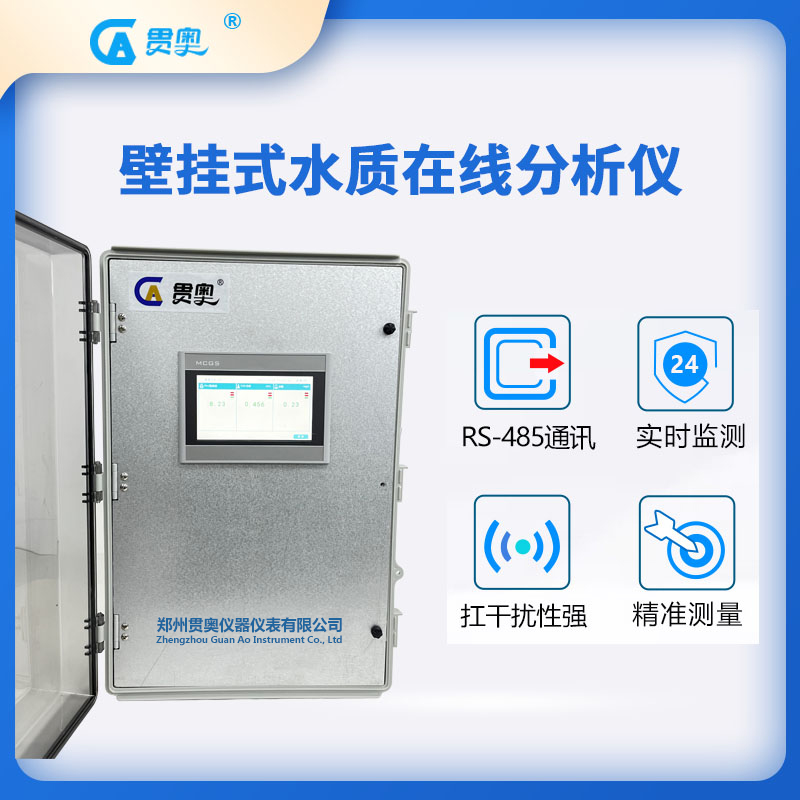Microbial detection method for secondary water supply in residential area
发布时间:2022/12/12 17:16:54 来源:贯奥仪器仪表 作者:便携式多参数水质分析仪器 阅读次数:
According to relevant statistics, by the end of last year, the urbanization of our country had reached about 65%, which means that the number of people using secondary water supply is increasing significantly. As we told you before, compared with the direct water supply at the lower level, the secondary water supply is prone to some problems if the daily management is not in place. Among them, the most common microorganisms in the water multiply in large numbers, which affects the health of users.
In the 2022 Sanitary Standard for Drinking Water, three parameters are specified for microbial indicators. They are total coliform, Escherichia coli and total bacterial count, of which total coliform and Escherichia coli cannot be detected. Common microbial detection methods include plate counting method, enzyme substrate method, multi tube fermentation method, filter membrane method, etc. The plate counting method is commonly used in secondary water supply.

Harm of exceeding standard microorganism in water
If the microorganism in the water exceeds the standard, it is harmful to human health first, because most of the microorganisms in the water are pathogenic bacteria. For example, if the total coliform group exceeds the standard, it will cause various inflammation and diarrhea, and Escherichia coli will also cause diarrhea, which will cause a large amount of water loss in the human body, and in serious cases, collapse will endanger life. Therefore, the detection standard of these two items is not allowed.
There is a difference between the total number of colonies and the first two items. The total number of colonies is not all pathogenic bacteria, but also contains some bacteria that are beneficial to human health. Although the total number of colonies is not as important as coliform bacteria in the sense of hygiene, it does not mean that it does not matter if the total number of colonies exceeds the standard, and it does not need to be treated. If the total number of colonies exceeds the standard, it means that the number of pathogenic bacteria is also increasing. Drinking this water is likely to cause harm to human health.
Detection methods of microorganisms in secondary water supply
The plate counting method is the most widely used method in the microbial detection of drinking water, mainly because the materials used in this method are very simple and the operation is relatively simple. Non professional personnel can also complete the task well under the guidance, and do not have to worry about errors. In addition, the use cost is relatively low. It can meet the daily simple microbial detection.
The specific testing steps according to relevant standards are as follows:
Take 1mL of fully mixed water sample (mixing method) with sterile pipette, inject it into a sterile plate, pour about 15mL of nutrient agar culture medium that has been melted and cooled to about 45 ℃, and immediately rotate the plate to fully mix the water sample with the culture medium. A parallel inoculation shall be carried out for each inspection, and a plate filled with nutrient agar medium shall be used as a blank control. It needs to be noted that only one gradient is needed for drinking water.
Solution of exceeding standard microorganism in secondary water supply
If the microorganism in the secondary water supply is found to exceed the standard during the test, first stop the high-level water supply in the community immediately to find out the reason for the microorganism exceeding the standard, and carry out the corresponding treatment. Next is to clean the water tank. The specific steps can refer to the industry standard 《SN/T 3883-2014 Specification for Cleaning and Disinfection of Secondary Water Supply Facilities at Frontier Ports》. Water supply will be resumed after disinfection and cleaning.
